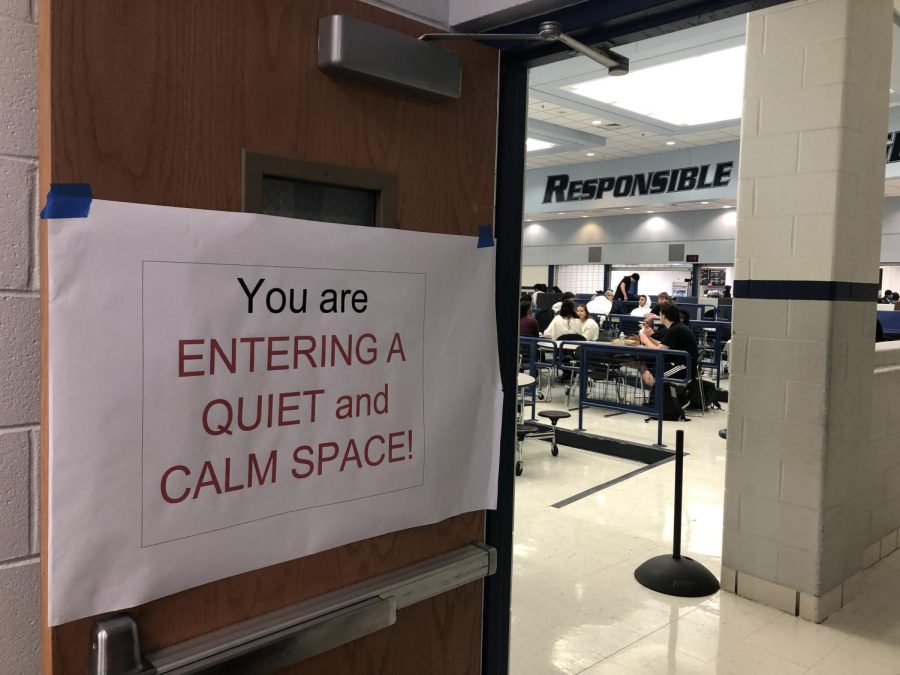‘Quiet’ cafetorium change prompts student reaction
The entrance to the cafetorium is decorated with signs meant to remind students that it is meant to be a quiet space.
At the start of second semester, administration announced students would be encouraged to use the cafetorium as a quiet workspace, no longer having access to the new C-Wing and West Events entrance during school hours, a change met with mixed, student response.
During first semester, senior Aaric Hager used the C-Wing as a space to sit during free time and currently uses the cafetorium as a space to hang out and eat lunch with his friends. He expressed his confusion, citing the inefficient nature of the change.
“I don’t understand why we did that… I don’t get it, it doesn’t make sense. Kids are going to go where they want anyways and the quiet area is not a quiet area, so it’s just pointless. It shouldn’t be, I don’t get it, it’s lunch; it’s our seating and they’re taking it,” Hager said.
“The feedback we had from students, parents and staff was that there was too much autonomy, and not enough making sure that we are making sure students are in class when they are supposed to be in class. So we needed to kind of say ‘ok there’s three choices instead of five.’ We didn’t want to make that change without being able to offer a different space,” Principal Arwen Lyp explained.
According to Lyp, some students welcome the change, however.
“I actually have received positive feedback from students– which I will be honest– I was not expecting. It’s mostly from freshmen who felt like ‘oh that’s good, I have somewhere I can go if the commons gets overwhelming,'” Lyp said.
Sophomore Becca Snouffer, a Principal-Student Advisory Counsel (PSAC) member said the group discussed the change in reaction to a survey response saying students want more quiet space.
“I think looking for quiet places for people to work is really important and hopefully we can find a solution that works for everyone without taking anyone’s space but also without disrupting other classes,” Snouffer said.
Lyp went on to explain that the lack of noticeable change in the cafetorium atmosphere may stem from misconceptions about the space’s purpose and the goal of the “quiet space” initiative.
“We have zero expectations that it’s going to be silent– we know students are going in there getting their lunch chatting back and forth. We’re not saying silent, we’re saying a quieter calmer choice than in the commons. It’s a work in progress, but for kids who feel [overwhelmed by the commons,] the cafetorium is a less busy option,” Lyp said.
The changes made to student autonomy spaces for second semester are not permanent and are anticipated to change as the school year goes on.


